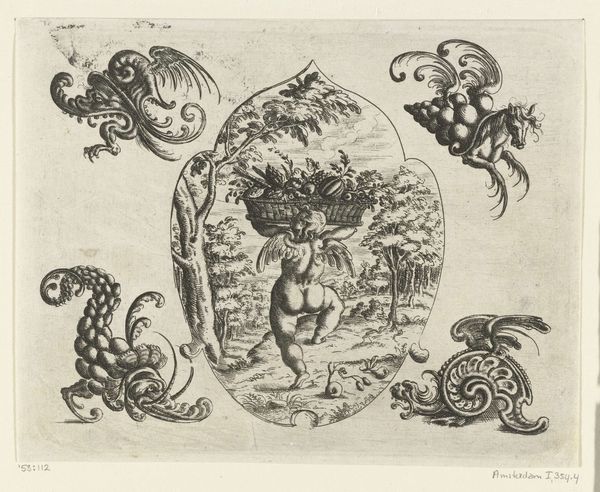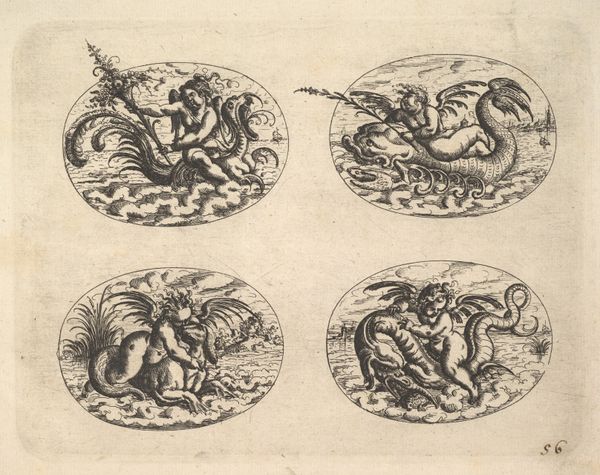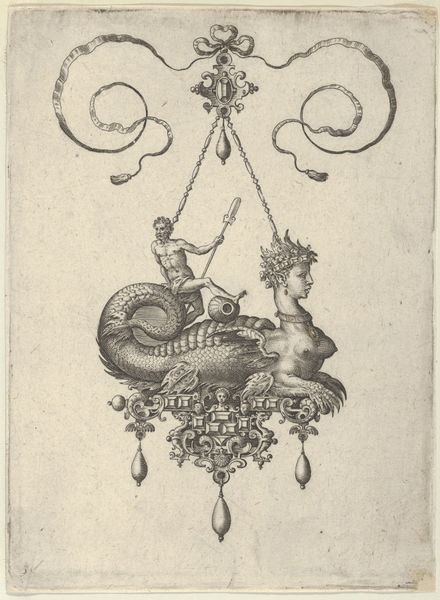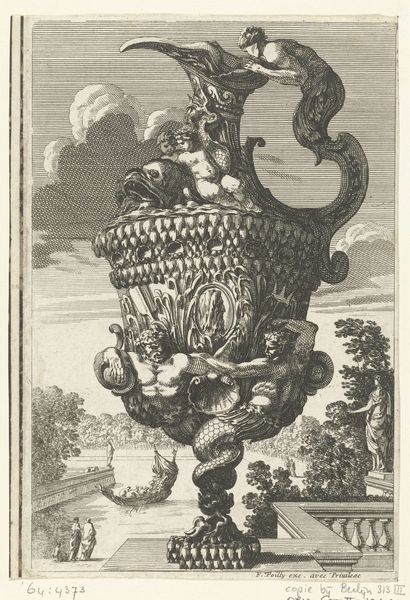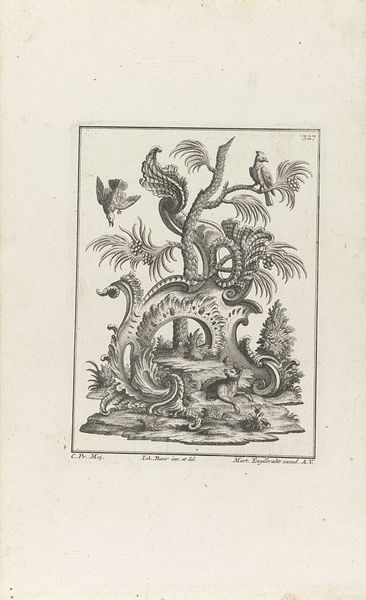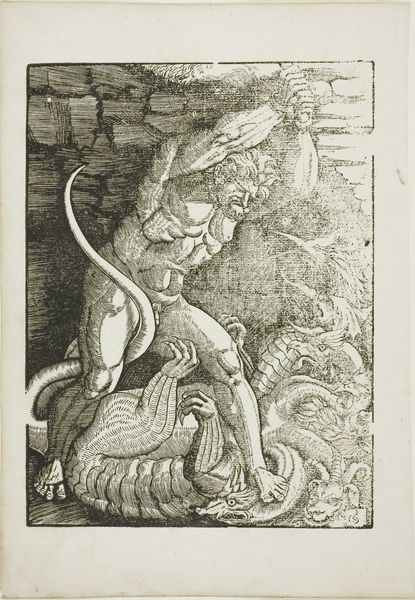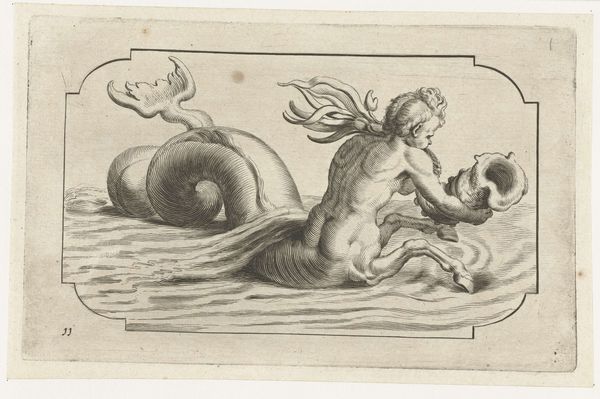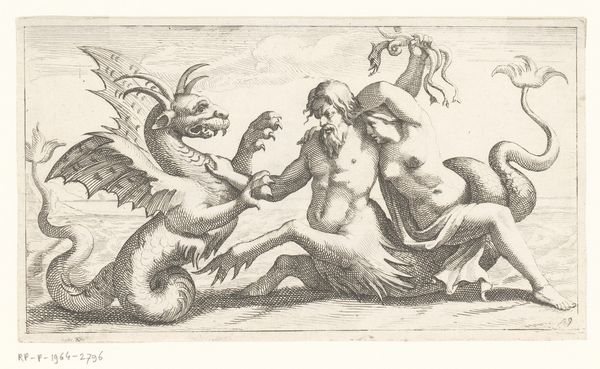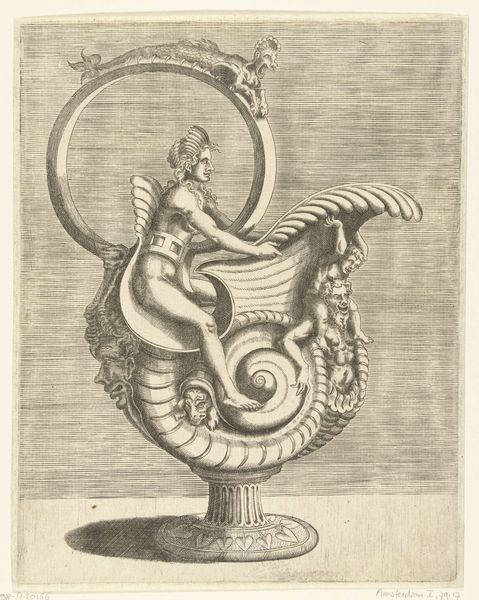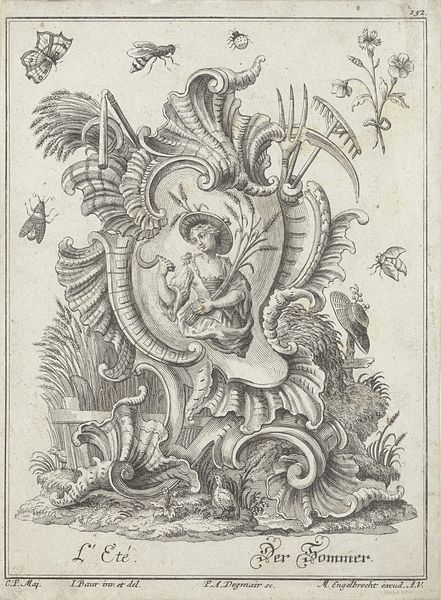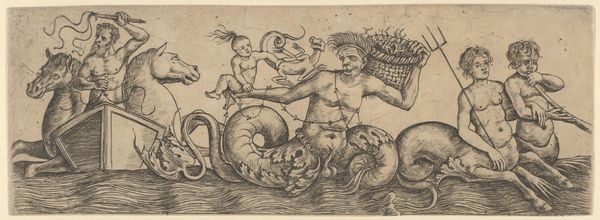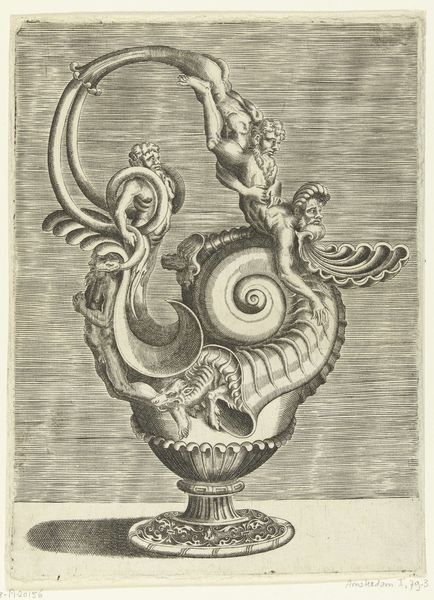
drawing, print
#
drawing
#
allegory
# print
#
mannerism
#
figuration
#
11_renaissance
#
decorative-art
Dimensions: 16 7/16 x 11 5/16 in. (41.8 x 28.7 cm)
Copyright: Public Domain
This design for a serving piece was made by Erasmus Hornick in the 16th century with pen and black ink, and gray wash, over black chalk. The first thing you notice is the elaborate design, with its mythological figures and grotesque details. But consider for a moment the material transformation that would be necessary to realize this drawing in precious metal. It would have required not only great skill on the part of the silversmith but also a tremendous amount of labor and resources to extract, refine, and work the silver. Hornick's design reflects the opulence and extravagance of the Renaissance court, where such serving pieces were symbols of wealth and power. The amount of work involved in the production process underscores the vast social inequalities of the time, with the labor of many contributing to the luxurious lifestyles of a few. By focusing on the materials, making, and social context of this design, we can gain a deeper appreciation of its historical significance, challenging traditional distinctions between fine art and craft.
Comments
No comments
Be the first to comment and join the conversation on the ultimate creative platform.
